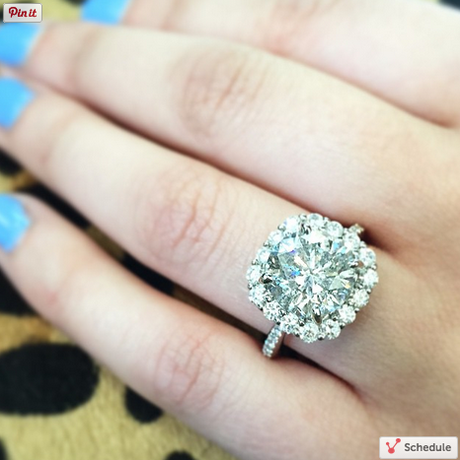
Readers, it’s time for some real talk.
We are here today, to talk about the c-word. Clarity enhancement. Like that other c-word, it’s just as dirty when you’re not up front about it. Some women are fine with it, others appalled. But the importance lies in disclosing when you’re about to use it (you know, earmuffs, etc.)Clarity enhancement is the jewelry industry’s dirty word. If you’re going to treat your stones, then fine, so be it. But you need to disclose up front that your customers should go into the conversation knowing that the c word is going to be used.You would never roll up on your grandma and drop that into casual conversation! Nor should you roll up on Pinterest (your cool cousin) and (not) drop it. Because, unfortunately, the vast majority of diamond consumers and engagement ring coveters don’t know to look for it. RLJ doesn’t buy clarity-enhanced diamonds (or we try not to) because it’s confusing to consumers. We’d just rather avoid it altogether. If you’re well-versed in diamond treatments and your jeweler discloses up front that a ring has been treated, there’s nothing wrong with clarity enhancement. It’s a great way to get a great deal on a good looking diamond – but it most certainly affects a diamond’s value and you should always know what you’re paying for.
A prime candidate for clarity enhancement, left untouched. Still pretty!
Clarity enhancement refers to several treatments a diamond might undergo to -you guessed it- enhance its clarity grade. Common treatments include laser drilling or fracture filling. To fill fractures, a tiny amount of glass material is introduced into super-thin crevices and fractures (aka feathers). Laser drilling is meant to zap away inclusions, much like unwanted body hair. It doesn’t affect the other characteristics of a diamond, like its carat weight or color. GIA has concluded that for normal wear, clarity enhanced diamonds are durable, but may be more susceptible to high heat, pressure or corrosive materials. So, you know, don’t stick your clarity enhanced diamond in a vat of acid (don’t do that with an untreated diamond either.)So, the c-word makes a statement about a diamond A big one. Maybe you’re cool with it. Maybe it offends you to your core. Either way. You have the right to know that’s its use is imminent. So avert your eyes, your wallets, and your ears if you’re so inclined, but don’t fall for something that seems too good to be true. A $10k-plus “discount” on a diamond doesn’t suggest wholesale pricing. This particular dealer isn’t acting charitably by giving you access to trade price structure, they’re usually selling treated diamonds. It’s up to them, as reputable sellers, to let you know. but it’s up to you, the one parting with hard-earned cash, to be a savvy, well-versed customer. So if you feel violated by use of the c-word, tell that dealer to wash their mouth out with soap and turn heel away from their shop.

